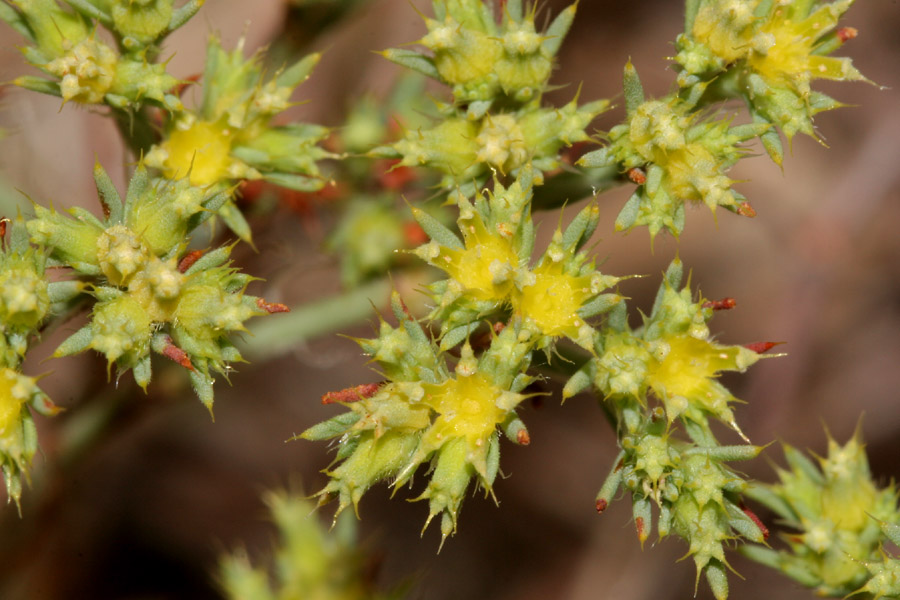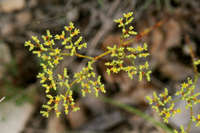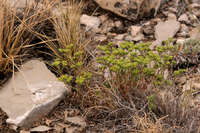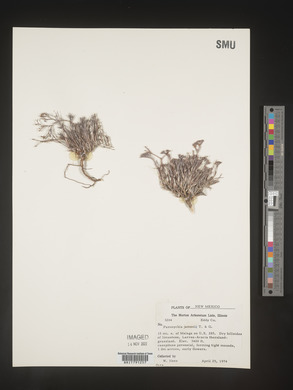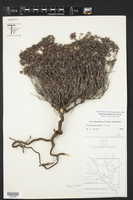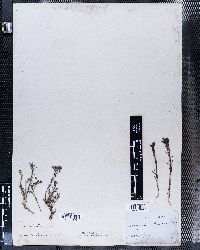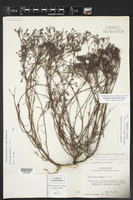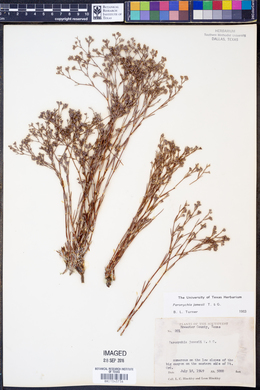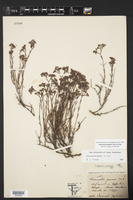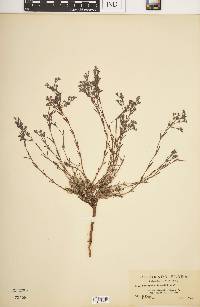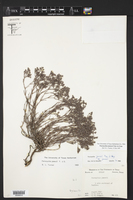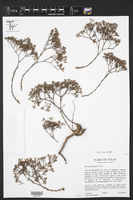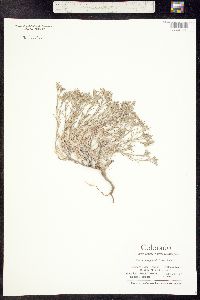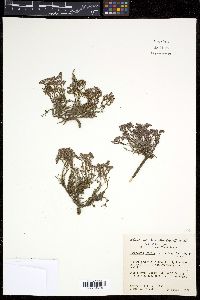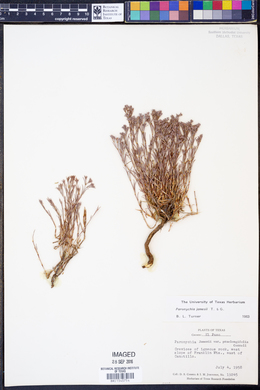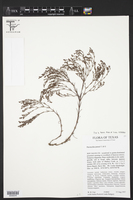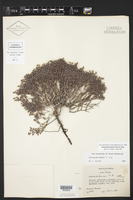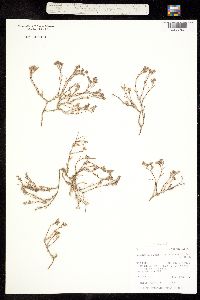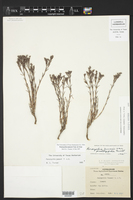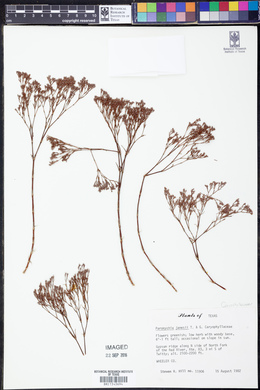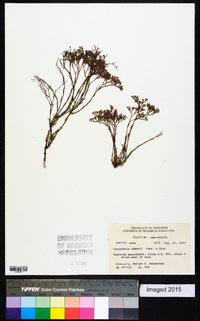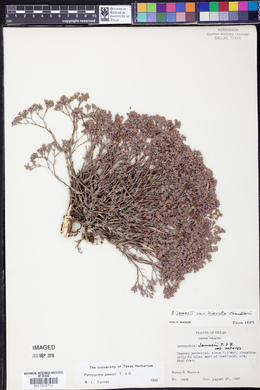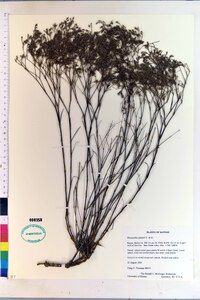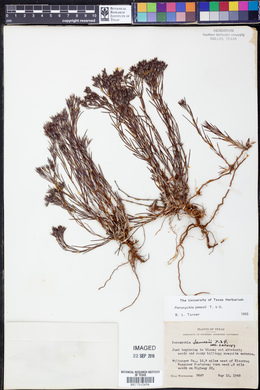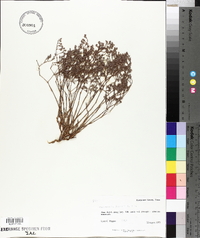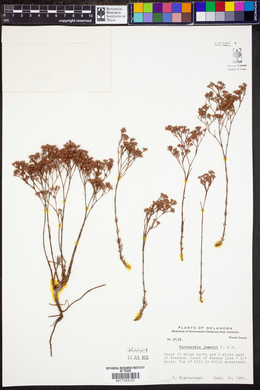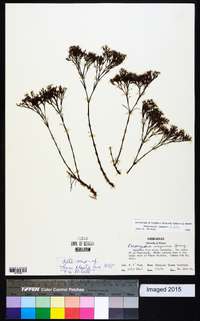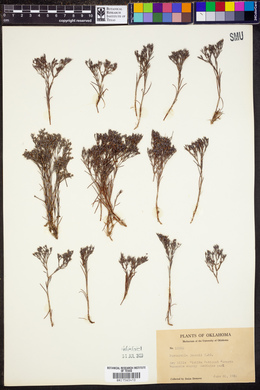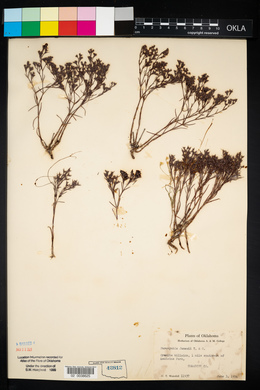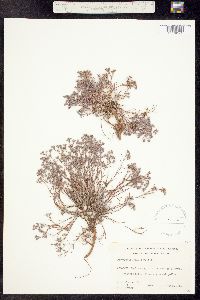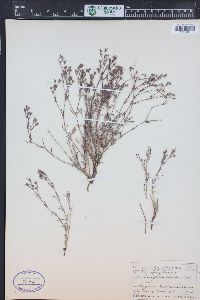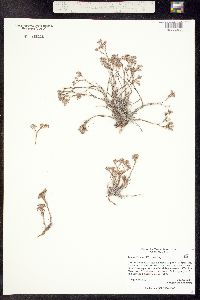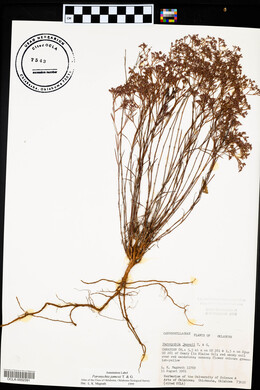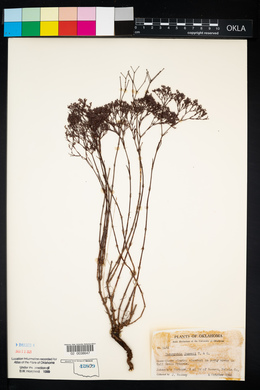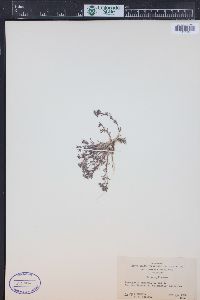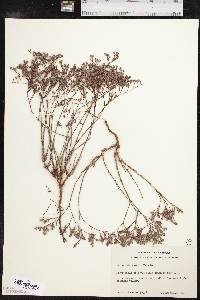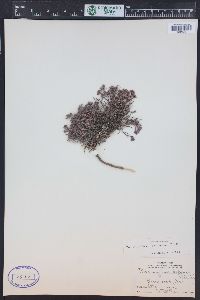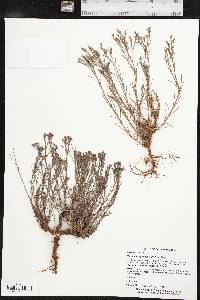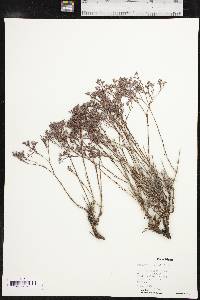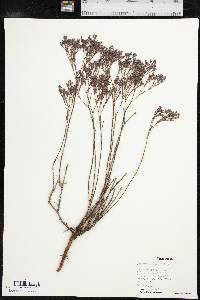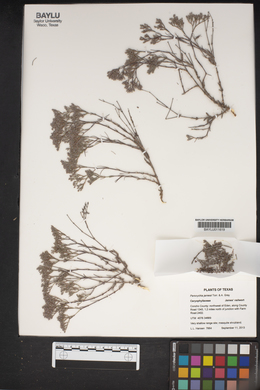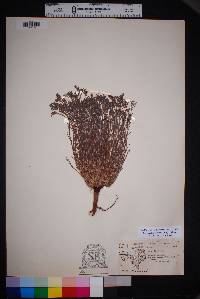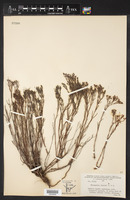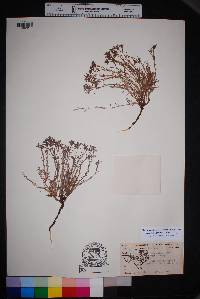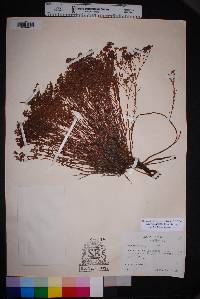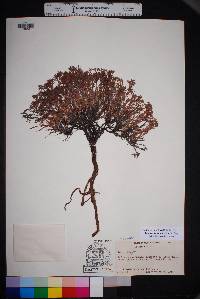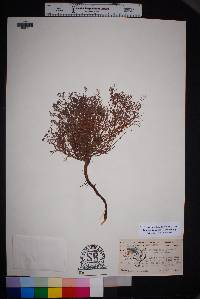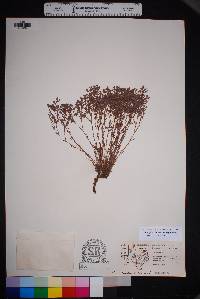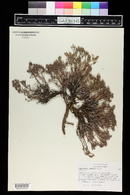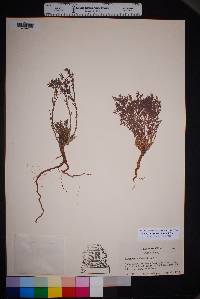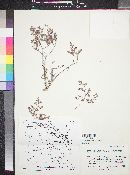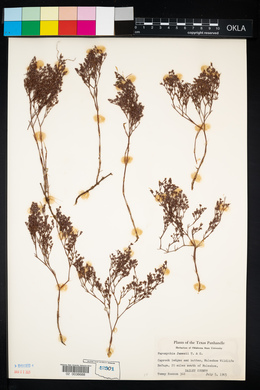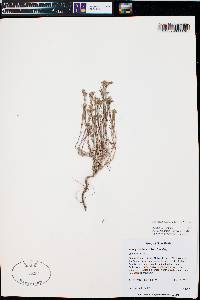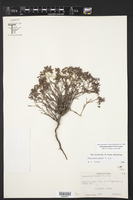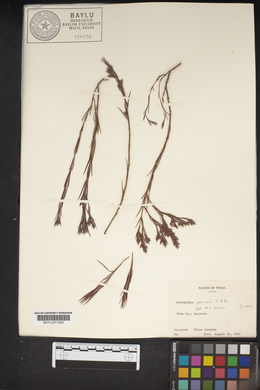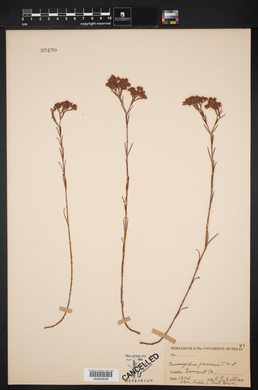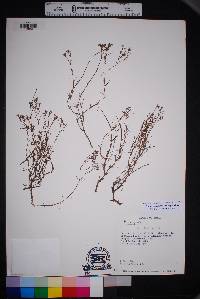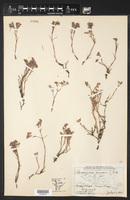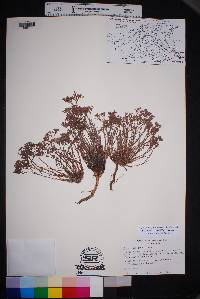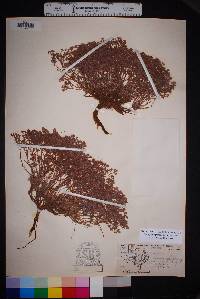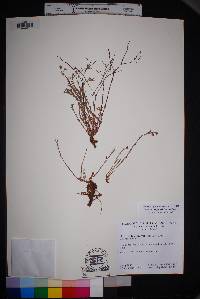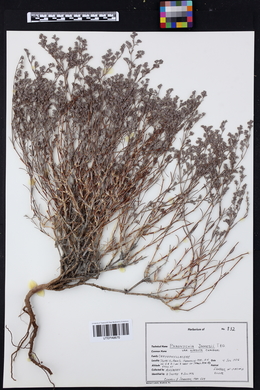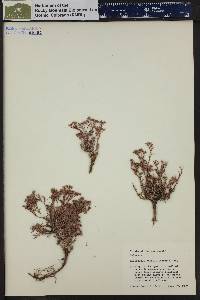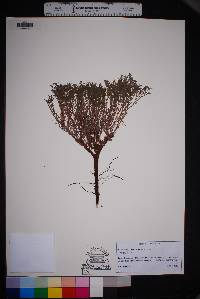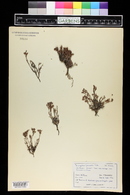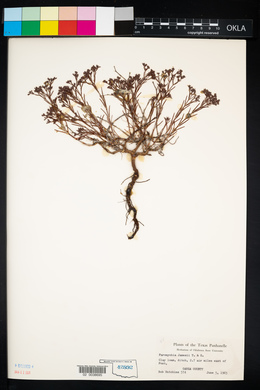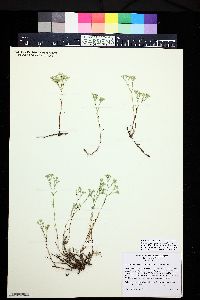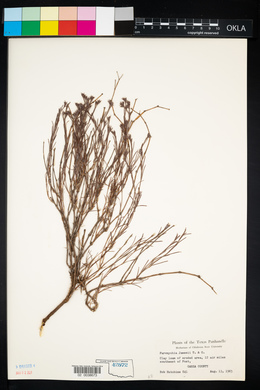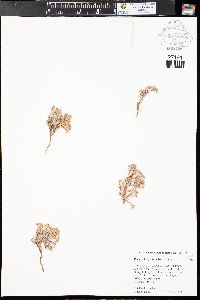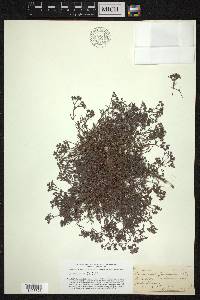Paronychia jamesii
|
|
|
|
Family: Caryophyllaceae
James' Nailwort, more...James nailwort, nailwort
[Paronychia jamesii var. hirsuta Chaudhri, moreParonychia jamesii var. parviflora Chaudhri, Paronychia jamesii var. praelongifolia Correll, Paronychia wardii Rydb.] |
Plants perennial; caudex branched, woody. Stems erect to ascending, much-branched, 10-35 cm, scabrous, puberulent to pubescent, sometimes glabrous with age. Leaves: stipules lanceolate, 5-15 mm, apex acuminate, entire; blade linear, 7-25(-34) × 0.5-1 mm, leathery, apex obtuse to subacute or submucronate, pubescent to puberulent. Cymes terminal, 20-70-flowered, open, clusters 1-2 cm wide. Flowers 5-merous, short-campanulate, with enlarged hypanthium and calyx widening somewhat distally, 1.8-2.8 mm, puberulent, glabrous to hirtellous distally; sepals green to red-brown, veins absent, oblong, 1.3-1.8 mm, leathery to rigid, margins whitish to translucent, 0.05-0.1 mm wide, scarious, apex terminated by awn, broadly rounded, awn widely divergent, 0.4-0.8 mm, conic in proximal 2- 3 with yellowish, scabrous spine; staminodes filiform, 0.6-1 mm; style 1, cleft in distal 1/ 1/ 6, 0.8-1.2 mm. Utricles ellipsoid-ovoid, 0.8-1 mm, smooth, glabrous. Flowering summer-fall. Limestone rocky ledges, slopes, hilltops, grasslands; 500-2500 m; Colo., Kans., Nebr., N.Mex., Okla., Tex., Wyo.; Mexico (Chihuahua, Coahuila). We agree with B. L. Turner (1983b) in not adopting the four varieties of Paronychia jamesii that Chaudhri recognized.
Allred and Ivey 2012, Heil et al. 2013, FNA 2005, Correll and Johnston 1970 Duration: Perennial Nativity: Native Lifeform: Forb/Herb General: Perennial herbs, 10-35 cm tall, from a branched, woody caudex; stems erect to ascending, much-branched, scabrous, puberulent to pubescent, sometimes glabrous with age. Leaves: Opposite along the stems, sometimes with clusters of several leaves at an attachment point; each leaf is accompanied by a scarious (transluscent and papery) stipule about the same size and shape; blades linear and leathery, 7-25 mm long and less than 1 mm wide, with a pointed tip, minutely hairy; stipules lanceolate, 5-15 mm long. Flowers: Tiny, green and yellow, in open terminal cymes (flat-topped inflorscences) of 20-70 flowers; flowers shortly bell-shaped, 2 mm long, with 5 sepals and no petals; sepals green to red-brown, oblong, 1-2 mm long, leathery to rigid, and tipped with a yellowish, scabrous spine. Fruits: Utricles ellipsoid-ovoid, 1 mm long, smooth and glabrous. Ecology: Found on limestone rocky ledges, slopes, hilltops, and grasslands, from 1,500-8,500 ft (457-2591 m); flowers May-November. Distribution: WY and NE, south to NM, TX, and ne MEX. Notes: This odd-looking plant is distinguished by being a perennial with many stems emerging from a stout woody taproot; needle-like leaves mixed with transluscent white stipules in clusters along the stems, especially near the base of the plant; if you look closely you'll see that the leaves are opposite; the stems end in flat-topped inflorescences of yellow and green flowers; the flowers lack petals, and the 5 sepals are narrow, green to brown, spine-tipped, and spreading so that the flowers are star-shaped when viewed from the top. There are several species of Paronychia; most of the others are cushion plants that form dense mats, with stems no more than 10 cm tall. Ethnobotany: Kiowa used it to make a tea. Etymology: Paronychia is named for the fungal infection of the fingernails and toenails, which it was once thought to cure; jamesii honors Edwin James (1797-1861), a surgeon-naturalist with the 1820 Long Expedition to the Rocky Mountains. Editor: AHazelton 2017 |

